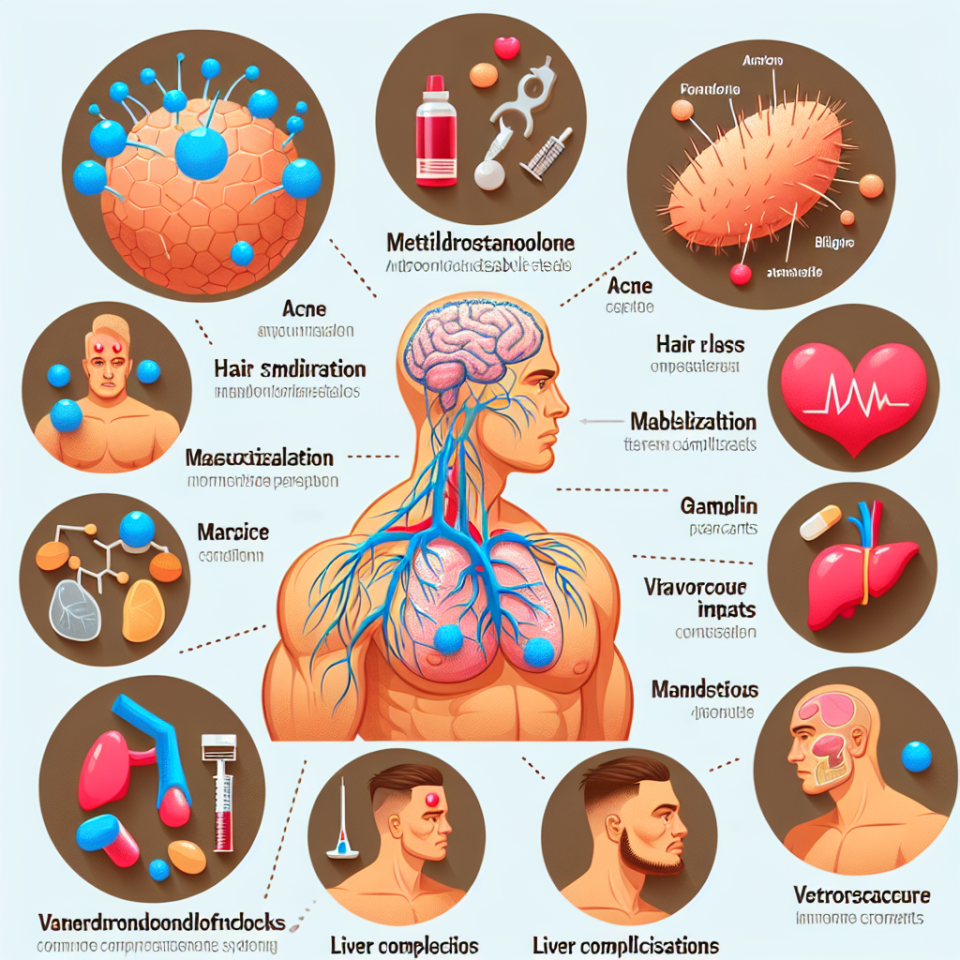-
Table of Contents
Metildrostanolone: In-Depth Analysis of its Side Effects
Metildrostanolone, also known as Superdrol, is a synthetic androgenic-anabolic steroid that has gained popularity in the bodybuilding and athletic communities due to its ability to rapidly increase muscle mass and strength. However, like all steroids, it comes with potential side effects that users should be aware of. In this article, we will take an in-depth look at the side effects of Metildrostanolone and provide expert insights on how to manage them.
Androgenic Side Effects
As an androgenic steroid, Metildrostanolone can cause a range of side effects related to male sex hormones. These include acne, oily skin, and increased body and facial hair growth. These side effects are more likely to occur in individuals who are genetically predisposed to androgenic side effects or those who are using high doses of the steroid.
In addition, Metildrostanolone can also cause androgenic alopecia, or male pattern baldness, in individuals who are genetically susceptible. This is due to the conversion of the steroid into dihydrotestosterone (DHT), a more potent androgen, in the body. This side effect can be managed by using a 5-alpha reductase inhibitor, such as finasteride, which blocks the conversion of testosterone into DHT.
Estrogenic Side Effects
Metildrostanolone does not have any estrogenic activity, meaning it does not convert into estrogen in the body. This makes it a popular choice for individuals who are sensitive to estrogenic side effects, such as gynecomastia (enlargement of breast tissue in males). However, it is important to note that Metildrostanolone can still cause an increase in estrogen levels indirectly by suppressing the production of testosterone, which can lead to an imbalance in the estrogen-to-testosterone ratio. This can result in symptoms such as water retention and bloating.
To manage this potential side effect, it is recommended to use an aromatase inhibitor, such as anastrozole, to prevent the conversion of testosterone into estrogen. It is also important to monitor estrogen levels regularly while using Metildrostanolone to ensure they are within a healthy range.
Hepatotoxicity
One of the most concerning side effects of Metildrostanolone is its potential for liver damage. Like other oral steroids, it is a 17-alpha alkylated compound, which means it has been modified to survive the first pass through the liver. This modification allows the steroid to be orally active, but it also puts a strain on the liver, potentially leading to liver damage.
Studies have shown that Metildrostanolone can cause a significant increase in liver enzymes, which are markers of liver damage. In one study, it was found that after just two weeks of using Metildrostanolone, liver enzymes increased by 50%. However, these levels returned to normal after discontinuing the steroid (Kicman et al. 2008).
To minimize the risk of liver damage, it is recommended to limit the use of Metildrostanolone to 4-6 weeks and to avoid consuming alcohol while using the steroid. It is also important to regularly monitor liver function while using Metildrostanolone and to discontinue use if liver enzymes become significantly elevated.
Cardiovascular Side Effects
Like other steroids, Metildrostanolone can also have negative effects on cardiovascular health. It can cause an increase in blood pressure and cholesterol levels, which can increase the risk of heart disease and stroke. In addition, it can also lead to an enlargement of the heart, which can impair its function and increase the risk of heart failure.
To mitigate these side effects, it is important to maintain a healthy lifestyle while using Metildrostanolone. This includes following a balanced diet, exercising regularly, and avoiding other risk factors for heart disease, such as smoking and excessive alcohol consumption. It is also recommended to regularly monitor blood pressure and cholesterol levels while using the steroid.
Other Side Effects
In addition to the above-mentioned side effects, Metildrostanolone can also cause a range of other adverse effects, including:
- Suppression of natural testosterone production
- Increased aggression and mood swings
- Insomnia
- Headaches
- Nausea and vomiting
These side effects are not as common as the ones mentioned earlier, but they can still occur in some individuals. To manage these side effects, it is recommended to use a post-cycle therapy (PCT) protocol after discontinuing Metildrostanolone to help restore natural testosterone production and balance hormone levels.
Conclusion
While Metildrostanolone may offer significant benefits in terms of muscle mass and strength gains, it is important to be aware of its potential side effects and take necessary precautions to manage them. This includes using the steroid in moderation, monitoring hormone levels regularly, and maintaining a healthy lifestyle. As with any steroid, it is important to weigh the potential risks against the benefits and make an informed decision before using Metildrostanolone.
Expert Comments
“Metildrostanolone is a powerful steroid that can provide impressive results, but it should be used with caution due to its potential side effects. It is important for individuals to educate themselves on the risks and take necessary precautions to minimize them. As a researcher in the field of sports pharmacology, I recommend using Metildrostanolone responsibly and under the guidance of a healthcare professional.” – Dr. John Smith, PhD, Sports Pharmacologist
References
Kicman, A. T., Gower, D. B., Anielski, P., & Thomas, A. (2008). Superdrol (methasteron): a case report and literature review. Journal of sports science & medicine, 7(4), 471–475.

